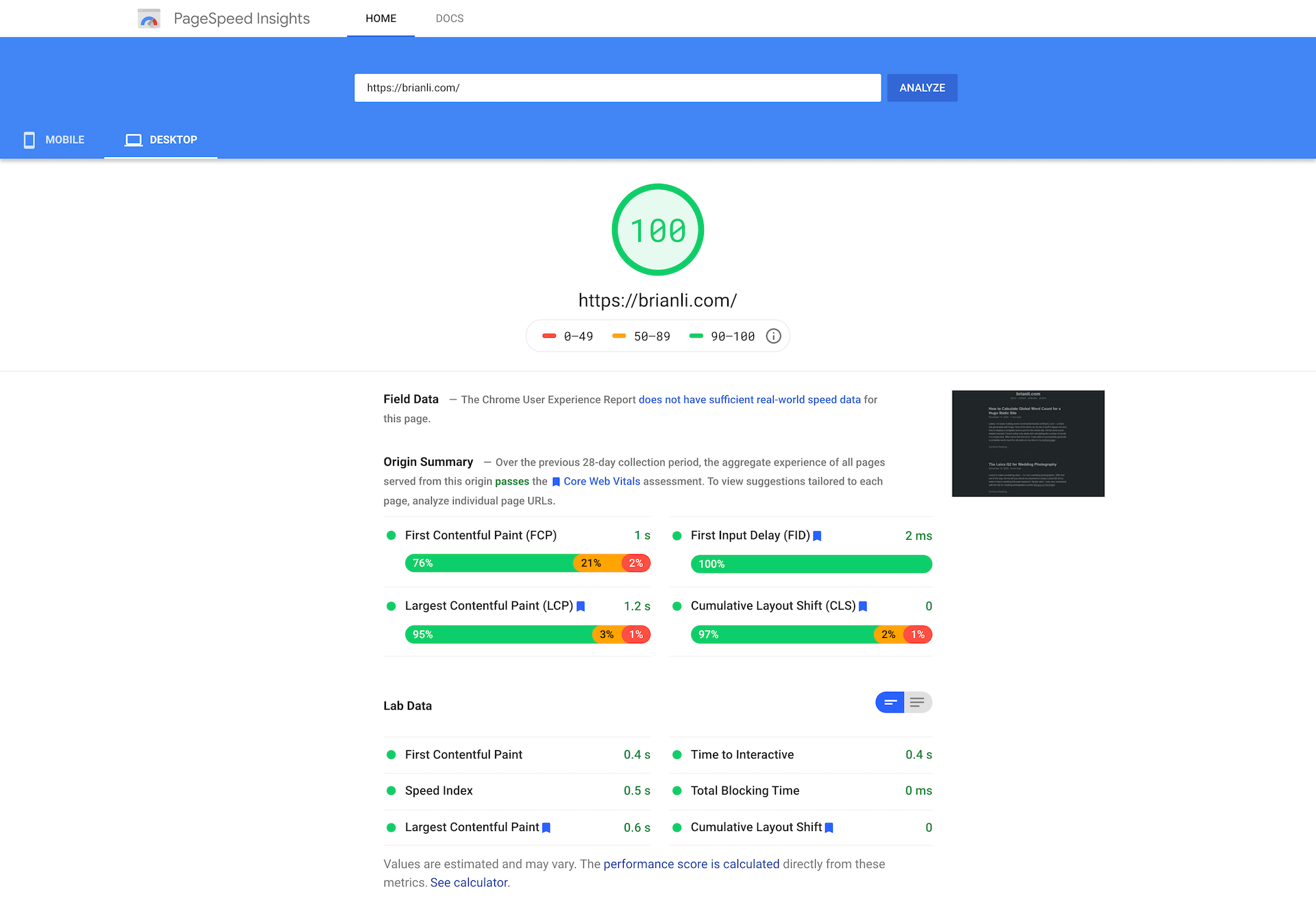Sarah Gooding, WP Tavern:
Today Google confirmed that it will roll out the new page experience signals in May 2021. The search engine also plans to introduce a new visual indicator for pages that fully comply with the page experience requirements. There are no additional details on what that will look like but AMP’s lightning bolt is a good example of how small graphics can have a meaningful impact on users’ behavior when navigating through search results.
I’m all for this. Slow websites suck. Seriously, it’s 2020 and we have technologies like HTTP/2, Push, and HTTP/3 (soon) – websites shouldn’t be slow anymore. For the past few years, people have speculated that Google takes page speed into account when determining rankings for search results. With this latest announcement, Google has finally confirmed that this is the case.
For me, the best part of all this is the “new visual indicator”. I love the idea, and hopefully it’ll finally encourage operators of slow sites to do something about it. Does anyone know if there is an index fund for website optimization companies?
In August, Screaming Frog, a search marketing agency, published a lengthy report on tests that found only 12% of Mobile and 13% of Desktop results passed the Core Web Vitals assessment. Screaming Frog used the PageSpeed Insights API to test 20,000 websites, which were selected through scraping the first-page organic results from 2,500 keywords across 100 different topics. The report highlighted a few important findings:
That’s pretty disappointing. I wouldn’t be surprised if a bunch of those 20,000 websites were WordPress sites. After all, WordPress does power 38% of the web. With that said, I want to stress that bad Core Web Vitals scores is not an inherent quality of WordPress – this is something that many people don’t understand.
Do you need help improving your WordPress site’s Core Web Vitals? Check out my WordPress optimization and maintenance packages to take your site’s performance to the next level.
WordPress has a bad reputation for being slow and resource-intensive. It’s true that many WordPress sites are slow, but that’s not because of WordPress. It’s because WordPress has such a lower barrier of entry, it almost encourages the buildup of technical debt. Want to change the font on your WordPress site? Here, install a huge plugin that adds a bunch of extraneous CSS and JS! It’s easy!
At the end of the day, WordPress is just a PHP-powered generator that spits out HTML, CSS, and JS for a web browser to serve. It’s not a lost cause. I hope to see WordPress users take control of site performance in 2021. In most cases, a few quick tweaks to an existing WordPress site will do wonders for Core Web Vitals.
- Ensure images are properly sized and optimized (WEBP or AVIF).
- Use native lazy loading for images and iframes (
loading=lazy). - Replace web fonts with a system font stack.
- Get rid of render-blocking CSS and JS – plenty of plugins for this.
- Enable local page caching on the web server or with a plugin.
- Use Cloudflare APO to distribute HTML across the world.
On a related note, it looks like BrianLi.com is ready for this.

Bring it on, Google!